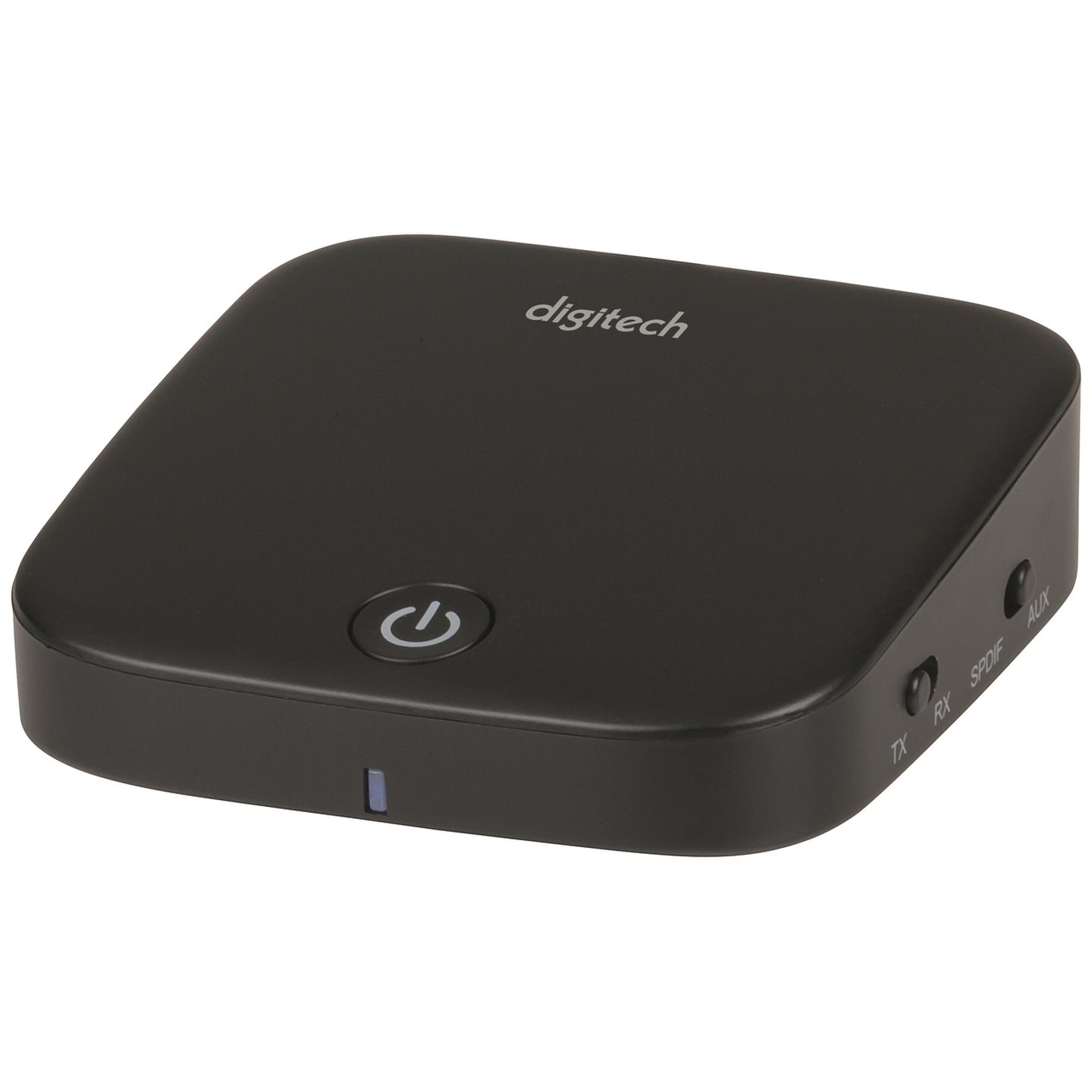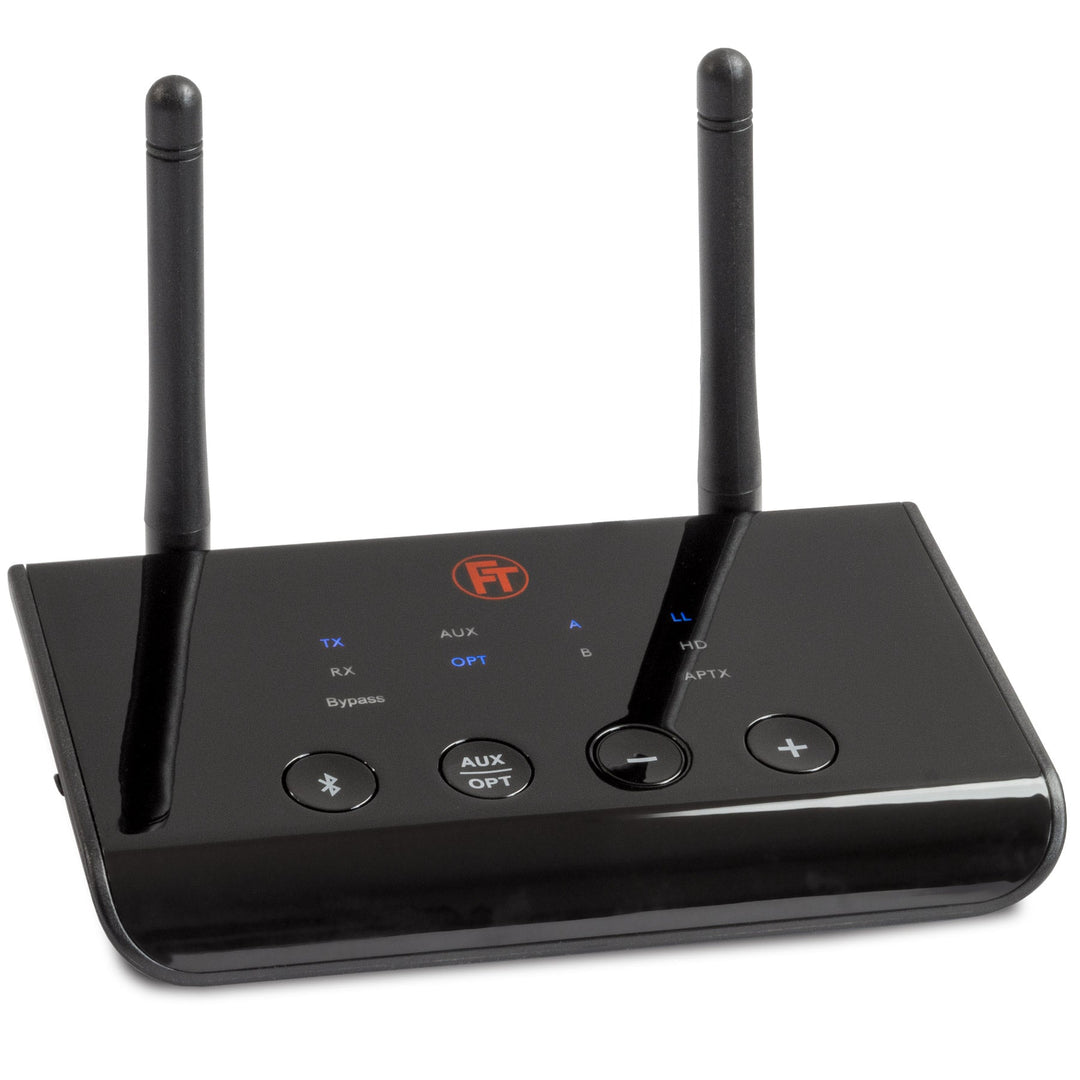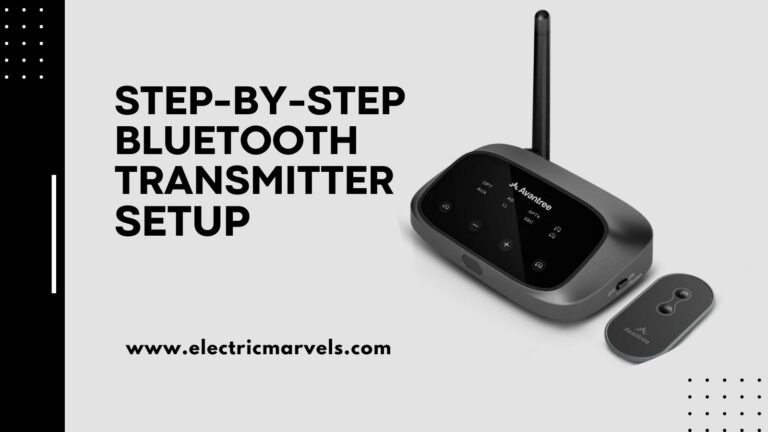In today’s tech-driven world, Bluetooth transmitters have become essential for enhancing wireless connectivity between devices. A Bluetooth transmitter is a compact gadget that allows non-Bluetooth devices, such as TVs or older audio systems, to connect wirelessly to Bluetooth-enabled devices like headphones, speakers, or smartphones. This makes it a perfect solution for those who want to enjoy wireless audio without upgrading their entire system.
Setting up a Bluetooth transmitter can dramatically improve your device’s functionality by adding wireless audio transmission. Whether you’re looking to stream sound from your TV to wireless headphones or upgrade your car’s sound system, a Bluetooth transmitter eliminates the hassle of cables, offering convenience and flexibility for seamless audio experiences.
For anyone wanting to cut the cord and go wireless, investing in a Bluetooth transmitter is a game-changer.
What is a Bluetooth Transmitter?
A Bluetooth transmitter is a device designed to transmit audio signals wirelessly from a non-Bluetooth device to Bluetooth-enabled devices like headphones, speakers, or smartphones. It acts as a bridge, converting a device’s audio output (usually through a 3.5mm jack, RCA, or optical port) into a Bluetooth signal. This allows users to enjoy wireless audio streaming without upgrading their older devices.

How Does a Bluetooth Transmitter Work?
The transmitter connects to the audio output of your device—whether it’s a TV, stereo system, or computer. Once connected, it broadcasts a Bluetooth signal, which can be picked up by any compatible Bluetooth receiver, such as headphones or speakers. The transmitter effectively converts wired audio signals into wireless ones, enabling seamless sound transmission.
Common Use Cases for Bluetooth Transmitters
- TVs: Stream sound from your TV to Bluetooth headphones or speakers for a wire-free viewing experience.
- Cars: Connect your phone wirelessly to your car’s audio system if it doesn’t have built-in Bluetooth.
- Audio Systems: Upgrade older home stereo systems to support Bluetooth, allowing you to play music wirelessly from your smartphone or tablet.
- Gaming Consoles: Use Bluetooth transmitters to connect wireless headsets to gaming consoles for an immersive audio experience.
Bluetooth transmitters provide a simple and cost-effective way to modernize older devices, making them compatible with the latest wireless technology.
What You Need Before You Begin
Before setting up your Bluetooth transmitter, it’s important to ensure you have the right equipment and compatible devices. Here’s a quick checklist to get you started:
Devices That Support Bluetooth Transmission
Bluetooth transmitters work best with devices that have an audio output, such as:
- TVs with 3.5mm audio jack, RCA ports, or optical output.
- Home Audio Systems including stereos or soundbars.
- Cars with AUX input but lacking built-in Bluetooth.
- Gaming Consoles and PCs that need wireless audio connectivity.
Necessary Equipment
To set up your Bluetooth transmitter successfully, you’ll need:
- Bluetooth Transmitter: The key piece of hardware that converts wired audio into a wireless Bluetooth signal. Ensure it’s compatible with your device’s audio output.
- Cables: Depending on your device, you might need a 3.5mm audio cable, RCA connectors, or an optical cable to connect your device to the transmitter.
- Compatible Bluetooth Devices: Make sure you have Bluetooth headphones, speakers, or any other device that can receive the wireless audio signal from the transmitter.
With these essentials, you’ll be ready to transform your non-Bluetooth device into a modern wireless system.
Step-by-Step Guide to Set Up a Bluetooth Transmitter
Setting up a Bluetooth transmitter might seem complex at first glance, but it’s actually a simple process that allows you to transform your wired devices into a modern, wireless setup. Whether you’re streaming audio from a TV to your Bluetooth headphones or connecting a sound system to wireless speakers, this guide will walk you through each step, ensuring that you’re able to enjoy a seamless wireless experience.
Step 1: Connect the Bluetooth Transmitter to the Audio Output of Your Device
The first step in setting up your Bluetooth transmitter is connecting it to the correct audio output on your device. Depending on the device you’re using, this connection will vary:
- For TVs and older audio systems, you’ll likely use a 3.5mm audio jack or RCA ports. These are common outputs found on many non-Bluetooth devices.
- For modern TVs, an optical digital output (also known as TOSLINK) may be the preferred choice as it delivers better audio quality. In this case, you’ll need an optical cable that connects the transmitter to the TV.
Ensure that the cable you’re using is properly inserted and secure, as a loose connection can lead to poor sound quality or no audio at all. Double-check the input and output ports, as using the wrong one may prevent the transmitter from working properly.
Step 2: Power on the Bluetooth Transmitter and Switch to Pairing Mode
Once your transmitter is connected to your device, it’s time to turn it on. Depending on the model, you may have a dedicated power button or it may turn on automatically once plugged in. Look for an indicator light that shows the transmitter is active.
Next, switch the transmitter to pairing mode. Most transmitters have a button or switch to enter pairing mode, and you’ll know it’s ready when you see a blinking light. This signal tells you that the transmitter is searching for a Bluetooth device to connect to. Keep in mind that pairing mode typically lasts for a few minutes, so you’ll want to move quickly to pair your devices.
Step 3: Pair the Bluetooth Transmitter with Your Bluetooth Device
Now it’s time to pair the transmitter with your Bluetooth device, whether it’s headphones, a speaker, or any other wireless device. Make sure that your Bluetooth device is also in pairing mode. To do this, follow the instructions provided with your Bluetooth device—typically, you’ll hold down a button until a pairing indicator light flashes.
Once both devices (the transmitter and the Bluetooth receiver) are in pairing mode, they should automatically find each other and connect. Some transmitters and receivers might require manual pairing, where you select the device from a list of available options on your Bluetooth device. If this is the case, ensure that you’re selecting the correct transmitter from the list.
After the devices are connected, you’ll often hear a tone or see the indicator light stop blinking and become steady, signaling that the pairing was successful.
Step 4: Test the Connection and Troubleshoot Any Issues
With everything paired and ready to go, it’s time to test the connection. Play audio from the device that’s connected to the Bluetooth transmitter, such as turning on your TV, computer, or stereo system. If everything is working correctly, the sound should come through your Bluetooth headphones, speakers, or whatever device you’ve paired.
However, if you don’t hear anything or the connection is weak, don’t worry. There are several common issues you can easily troubleshoot:
- Ensure proximity: Bluetooth devices typically work best when they’re within close range, ideally within 10 meters (30 feet). If your devices are too far apart, try moving them closer together to strengthen the signal.
- Check for interference: Other wireless signals, such as Wi-Fi routers or cordless phones, can interfere with the Bluetooth connection. If you experience poor sound quality or connectivity drops, try turning off nearby wireless devices or moving your Bluetooth devices away from them.
- Restart your devices: Sometimes, simply turning your devices off and on again can resolve connectivity issues. Restart both the transmitter and the Bluetooth receiver, then attempt to pair them again.
- Reset pairing: If your Bluetooth transmitter has trouble pairing, reset the pairing process by clearing the saved connections on both the transmitter and the Bluetooth device. Then, repeat the pairing steps from the beginning.
After troubleshooting, if everything is working smoothly, you should now have crystal-clear, wireless audio streaming from your device through your Bluetooth headphones, speakers, or car audio system.
By following this step-by-step guide, you’ve just unlocked the freedom of wireless connectivity—enjoy your wireless audio experience without the hassle of tangled cables or being tied to a device!

Troubleshooting Common Bluetooth Transmitter Issues
Even after successfully setting up your Bluetooth transmitter, occasional issues can arise, such as connection drops, syncing problems, or compatibility challenges. Luckily, most of these issues are easy to troubleshoot and resolve. Here’s how to address the most common problems:
Connection Drops or Pairing Problems
One of the most frequent issues with Bluetooth transmitters is the loss of connection or difficulty pairing with Bluetooth devices. Here are some potential causes and solutions:
- Interference from Other Devices: Bluetooth operates on the same 2.4 GHz frequency as Wi-Fi, microwaves, and some cordless phones. If you’re experiencing connection drops, try moving your Bluetooth devices away from these types of equipment.
- Distance Between Devices: The effective range of most Bluetooth devices is around 10 meters (30 feet). If you move too far from the transmitter, the connection may drop. Ensure your Bluetooth device stays within the transmitter’s range.
- Low Battery Levels: Low power on either the transmitter or your Bluetooth device can result in unstable connections. Charge both devices fully before use to ensure a strong, uninterrupted signal.
- Restart and Re-pair: Sometimes, restarting both the transmitter and the Bluetooth receiver (headphones, speakers, etc.) can fix the issue. You can also try deleting the paired connection from both devices and then re-pairing them.
Syncing Issues with Audio and Video
If you’re watching a movie or playing a game and notice that the audio lags behind the video, this is known as audio lag. It’s a common issue with Bluetooth transmitters, but there are ways to minimize or eliminate it:
- Use a Low-Latency Transmitter: Some Bluetooth transmitters support aptX Low Latency technology, which is designed to reduce the lag between the audio and video. If you’re using a transmitter without this feature, consider upgrading to one that does.
- Check Your Device Settings: Some devices, like smart TVs or gaming consoles, have settings to adjust audio delay (also known as “lip-sync” settings). Tweak these settings to better sync the audio with the video.
- Avoid Interference: As mentioned earlier, wireless interference can degrade performance, leading to audio lag. Make sure your Bluetooth devices are not surrounded by other wireless signals that could cause interference.
How to Resolve Compatibility Issues
Not all Bluetooth devices are created equal, and sometimes compatibility issues can arise between your transmitter and Bluetooth headphones, speakers, or other devices. Here’s how to troubleshoot compatibility challenges:
- Ensure Bluetooth Versions Match: Make sure your transmitter and Bluetooth receiver are using compatible Bluetooth versions. For instance, if your headphones only support Bluetooth 3.0, but your transmitter uses Bluetooth 4.2, you may experience connection problems or reduced functionality.
- Check Supported Audio Codecs: Some Bluetooth transmitters and receivers use different codecs (audio compression formats) such as aptX, AAC, or SBC. If your transmitter supports aptX but your headphones do not, they will default to the standard SBC codec, which may cause lower audio quality or syncing issues. Ensure both devices support the same codecs for optimal performance.
- Update Firmware: If your Bluetooth transmitter or receiving device (like headphones) has outdated firmware, it can cause compatibility issues. Check the manufacturer’s website for any available firmware updates and apply them to your devices.
- Use a Bluetooth Adapter: If compatibility issues persist, consider using a Bluetooth adapter that bridges the gap between older devices and newer Bluetooth technology. These adapters are designed to improve compatibility and performance between mismatched devices.
By following these tips and troubleshooting steps, you should be able to resolve most common issues with Bluetooth transmitters, ensuring a smoother, more reliable wireless experience.





